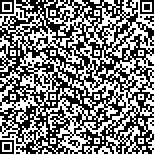| Quote
: |
黄河,王晶,方园,刘密,常小荣,冯芳.基于艾灸温通理论探讨艾灸内关穴预处理对大鼠MIRI保护机制的研究[J].湖南中医药大学学报英文版,2020,40(9):1049-1053.[Click to copy
] |
|
| |
|
|
| This paper
:Browser 1864times Download 460times |
| 基于艾灸温通理论探讨艾灸内关穴预处理对大鼠MIRI保护机制的研究 |
| 黄河,王晶,方园,刘密,常小荣,冯芳 |
| (湖南中医药大学针灸推拿学院, 湖南 长沙 410208;湖南中医药大学针灸推拿学院, 湖南 长沙 410208;浏阳市中医医院, 湖南 浏阳 410300;郴州市第一人民医院西院, 湖南 郴州 423000) |
| 摘要: |
| 目的 以心肌缺血再灌注损伤(myocardial ischemia reperfusion injury,MIRI)大鼠模型为实验对象,探讨艾灸温通效应对MIRI大鼠的预保护作用是否与心肌细胞中B细胞淋巴瘤/白血病-2(Bcl-2)、低氧诱导因子-1α(HIF-1α)及天冬氨酸特异性半胱氨酸蛋白酶-3(Caspase-3)的变化有关。方法 40只SD大鼠随机分为正常组、模型组、艾灸5 d组、艾灸10 d组,每组10只,各组按被试因素予以干预并取材,采用Western blot和RT-PCR分别检测心肌细胞中Bcl-2、HIF-1α、Caspase-3的表达和mRNA的表达。结果 与模型组相比,艾灸5 d组和艾灸10 d组大鼠心肌细胞中HIF-1α及Caspase-3的蛋白表达和mRNA表达显著降低(P<0.01或P<0.05),Bcl-2蛋白表达和mRNA表达显著增高(P<0.01);与艾灸5 d组相比,艾灸10 d组大鼠心肌细胞中Bcl-2蛋白表达显著增高(P<0.05),Caspase-3的蛋白表达显著降低(P<0.01),HIF-1α和Caspase-3的mRNA表达显著降低(P<0.01或P<0.05)。结论 艾灸温通效应对心肌缺血再灌注所引起的心肌细胞损伤具有保护作用,其机制可能是通过降低MIRI大鼠心肌细胞中HIF-1α、Caspase-3的含量,增加心肌细胞中Bcl-2的含量,最终起到保护作用。 |
| 关键词: 心肌缺血再灌注损伤 艾灸 温通理论 内关穴 保护机制 |
| DOI:10.3969/j.issn.1674-070X.2020.09.001 |
| Received:May 09, 2020 |
| 基金项目:国家重点基础研究发展计划(973计划)项目(2015CB554502);国家自然科学基金项目(81874509);湖南省研究生科研创新项目(CX2018B469);郴州市科技发展计划项目(ZDYF2020098)。 |
|
| Study on the Protective Mechanism of Moxibustion Neiguan (PC6) on MIRI in Rats Based on Moxibustion Warm-dredging Theory |
| HUANG He,WANG Jing,FANG Yuan,LIU Mi,CHANG Xiaorong,FENG Fang |
| (College of Acupuncture-Moxibustion and Tuina, Hunan University of Chinese Medicine, Changsha, Hunan 410208, China;College of Acupuncture-Moxibustion and Tuina, Hunan University of Chinese Medicine, Changsha, Hunan 410208, China;Liuyang Hospital of Chinese Medicine, Liuyang, Hunan 410300, China;West Hospital of Chenzhou First People's Hospital, Chenzhou, Hunan 423000, China) |
| Abstract: |
| Objective To explore whether the pre-protective effect of moxibustion and warming-dredging effect on myocardial ischemia-reperfusion injury rats is related to the changes of Bcl-2, HIF-1α and Caspase-3 in myocardial cells by taking the rat model of myocardial ischemia-reperfusion injury (MIRI) as the experimental object. Methods A total of 40 SD rats were randomly divided into a normal group, a model group, a moxibustion 5-day group, and a moxibustion 10-day group, with 10 rats in each group. Each group was intervened and draw materials according to the test factors. The expression of Bcl-2, HIF-1α, Caspase-3 and the relative expression of genes were detected by RT-PCR and Western blot. Results Compared with the model group, the protein and mRNA expressions of HIF-1α and Caspase-3 in myocardial cells of moxibustion 5-day group and moxibustion 10-day group were significantly reduced (P<0.01 or P<0.05), and Bcl-2 protein expression and mRNA expression was significantly increased (P<0.01); Compared with the moxibustion 5-day group, the Bcl-2 protein expression in myocardial cells of the moxibustion 10-day group was significantly increased (P<0.05), and the Caspase-3 protein expression was significantly reduced (P<0.01). The mRNA expressions of HIF-1α and Caspase-3 were significantly reduced (P<0.01 or P<0.05). Conclusion The moxibustion and warming-dredging effect has protective effect on myocardial cell injury caused by myocardial ischemia and reperfusion, and its mechanism may be to reduce the content of HIF-1α and Caspase-3 in myocardial cells of MIRI rats, increase the content of Bcl-2 in myocardial cells, and finally play a protective role. |
| Key words: myocardial ischemia reperfusion injury moxibustion warm-dredging theory Neiguan (PC6) protection mechanism |
|

二维码(扫一下试试看!) |
|
|
|
|


